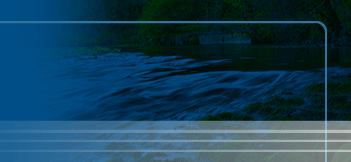RHFAG Membership
For membership enquiries, please contact the Secretary at ian@bertemcam.me.uk.
Please include your postal address so that a Membership Form can be sent to you.
The Conditions of Membership of RHFAG are
- being keen on archaeology
-
being interested in taking part in scientific archaeological fieldwork or research
- being willing to learn, develop and use archaeological skills
- behaving appropriately on archaeological sites
- agreeing to be bound by the RHFAG Constitution
- paying the appropriate annual subscription (see below), correct as for 2016.
RHFAG Annual Subscription Rates
- Waged Member: £21.00 pa
- Unwaged member: £7.00 pa
- Retired Member: £14.00 pa
- Student Member (16 years or over): £7.00 pa
- Youth member (11 – 15 years): £2.80 pa*
*Please note that a Youth Member cannot vote and must have a parent/guardian who is also a RHFAG Member and accompanies her / him at all times.
There is a 20% reduction for partners living at the same address
The Membership Year runs from January to December. The rate for joiners is scaled as follows
- Joining from January to June inclusive = normal Subscription
- Joining from July to September inclusive = 50% of annual Subscription
- Joining from October to December inclusive = full annual subscription, which will cover membership to the end of the current year and all of the following year.
Please also see Question 4 in the FAQs section which is about our Subscription Rates.
Being a RHFAG Member
Membership of RHFAG entitles you to take part in all Group Activities and Excavations free of any charge, attend meetings and events, receive Minutes and any Newsletters, borrow from our small library, contribute your own ideas, vote and apply for Office.
RHFAG’s work is co-ordinated by its Committee which will always consist of a minimum of Chairman, Secretary and Treasurer. The Committee does not meet separately but as an integral part of the General Meetings for Members. These take place each month, excluding July, August and December, at the Heritage Centre, Canvey Road, Canvey Island or at a member's house. All Members are welcome at these meetings.
Our programme of practical work varies from year to year but the main activity normally takes place in July or August over a period of at least two weeks. It may be preceded by preparatory work over a series of weekends and follow-up work afterwards.
Our practical work often includes excavation. Excavation removes the superimposed contexts ("layers"), one by one, while recording each carefully and placing the finds in the appropriate Finds Tray for the context in which they were found. There are quite a lot of different activities and it is up to you how many of these you get involved in and how often you attend the Dig. You might be interested in helping to open up the trench and trowel away, hoping to discover interesting things. Or, you might prefer sit at a small table cleaning the finds, so being the first to see what they really look like, be they brightly coloured designs on pieces of pottery, the cast writing and face on a coin, the maker's mark beneath the bowl of a clay pipe ... or something that really was not quite as interesting as it first appeared to be.
These activities are interrupted by breaks for coffee, tea, biscuits and cakes.
The progress of an excavation does not always go as planned. There can be delays in how much of the planned work is done such as through a spell of really bad weather bringing a temporary halt to digging. Deviations from the plan can also come through finding the edge of what could be a really important new feature close to the anticipated end to the Dig. This can mean that excavation might be extended by several days, usually at weekends, which could take us into September or October.
Finally, however, digging stops and the last measuring, drawing and photographing is completed. It is then time to backfill, putting most of what was taken out of the trench back into it.
Research linked to the excavation or site can relate to any question thrown up by the dig and does not always involve scholarly study of old documents and we can use the internet a lot. What, for example, did the numbers and letters 3200 DEP on a fragment of what appeared to be bisque actually mean? The quickest clue to answering this particular question actually came from the Ebay website on the evening that the find was made.
We have our barbecue near to the end of the dig at a time when most Members can attend and the weather seems likely to be kind to us.
Following the excavation, the processing of finds continues, usually at weekends spread across several months. This includes completing the cleaning, cataloguing and bagging up of the finds and sometimes contacting specialists regarding particularly interesting, significant or problematic finds. The work on the excavation will conclude with final writing up.
Unconnected to the summer excavation, smaller scale excavations may take place across the year, such as test pits in Canewdon. These pits are one square metre in size and the excavation is usually completed in a single day, sometimes extending into two.
We have our annual meal in February or March and a Christmas gathering in November or December. These are both always enjoyable events.
A copy of the RHFAG Constitution is given to Members on joining.
For information: In most years, we have an excavation period in the summer but as this is linked to the duration of specific projects, it may not be the case in every year. In the absence of an excavation, we would normally have a similar period of practical activities or post-excavation work.


